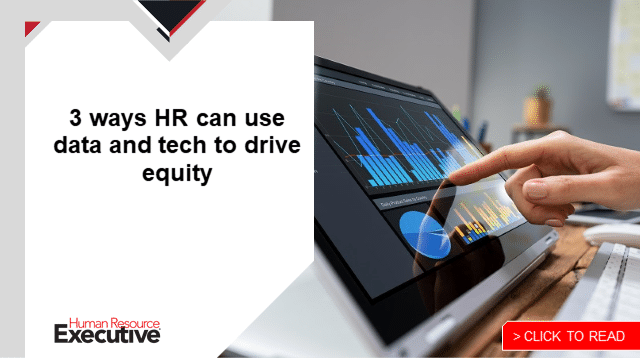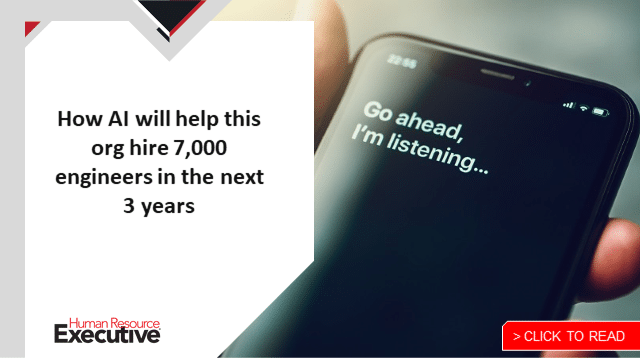For decades, companies have embraced HR technology by starting at the “core” with HR management systems. Companies spend millions to tens of millions of dollars to implement them, and then, over time, add other tools to fill in with needed functionality. These core systems of record are a key component in a company’s technology infrastructure and influence decisions on many billions of dollars spent on other employee applications and tools.
However, the center of gravity has now changed. Certainly, HCM systems are still necessary to run a company; but now employee experience and talent intelligence solutions are the technology layers that are most important for an effective HR infrastructure.
What caused this shift? Essentially, it goes back to the history of HCMs, which were based on the ERP solutions of the 1970s and 1980s. ERPs, sold by companies such as SAP and Oracle, were end-to-end solutions that managed products, suppliers, vendors, financials and results.
In the 1980s, software vendors tried to apply the ERP model to HR. Pioneers such as PeopleSoft recognized that ERPs simply did not handle the needs of HR and so created specialized solutions. These early HCMs were focused on fundamental HR areas, such as payroll, employee record keeping and job architecture, and they were intended to be a company’s system of record for employees.
But, as we’ve seen over recent years, this functionality wasn’t enough. Companies needed solutions that could manage learning, succession, career paths, benefits and much more. HCMs typically didn’t handle part-time employees or contractors well, nor could they be easily adapted to meet changing compliance requirements or the specialized needs of different business units or geographies.
 Related 6 tips for choosing the right HR technology
Related 6 tips for choosing the right HR technology
As a result, companies added all sorts of applications to fill in the gaps, and, in many cases, also ended up with multiple HCM solutions (often because of mergers, acquisitions or multiple business units). Today, most companies have solutions for learning management, applicant tracking, performance assessments, surveys and much more.
Recent Examples of Top-Down Decisions
My first example is a major shipping company with more than 700,000 employees around the world and with a patchwork of back-end systems for managing local payrolls and benefits. The company’s current need is a modern employee experience platform for drivers, operators, distribution agents and professionals. Its leaders have chosen Staffbase, a modern EX communications platform, to provide the needed functionality. Other vendors in this space include ServiceNow, Applaud, Microsoft Viva and a new breed of “deskless worker” EX platforms such as Workjam and Yoobic.
Now that the company has a defined EX layer, project teams are going down the technology stack to improve experiences for employee surveys, journey management and other key areas. None of this work impacts the core HCM systems.
Another example: A large global electrical systems manufacturer, which does business in more than 30 countries, has more than 15 HCM systems around the world. Each processes local payroll and manages local regulatory compliance and local staffing needs. The CHRO is looking for a better data analytics solution, an integrated EX platform and a series of new applications for internal mobility, skills development and career planning.
The original thought was to replace all of the company’s back-end systems with a whole new platform. However, after exploring their needs in detail, we all came to the conclusion that it really doesn’t need HCM replacements; rather, the company would be much better off if it focused on buying a global data warehouse, a global skills and mobility system, and then a standard set of EX tools for employee access, portals and support. While at some point, the company may decide to upgrade its core HCM systems, its immediate needs wouldn’t be served by going in that direction and it can save lots of money by focusing on the top of the stack.
Also see The 10 HCM tech tools that deliver immediate business impact
The third example is an Asian company that operates in raw materials and distribution. In addition to a core HCM, it has a mix of on-premise and cloud systems and multiple payroll systems in different countries. Leaders were questioning whether they should consider a massive HCM change or upgrade and incorporate new features offered by its current HCM provider. The final decision was not to replace its HCM but to upgrade it over time while focusing new investments in EX.
The common lesson from these companies is this: If your employees and customers are not happy or are wasting precious time because of unproductive experiences, it doesn’t matter how elegant the back-end system may be. Time and resources are best invested in improving the experience.
 Our HCM research also bears this out. We found that companies that had greatest success with large HR tech projects focused on employees first, technology second. They clearly defined their employee and management needs, their new talent practices and cultural goals, and the data they wanted to capture. These companies, which we put at the top of our HR technology maturity model, balance operational, strategic and transformational excellence.
Our HCM research also bears this out. We found that companies that had greatest success with large HR tech projects focused on employees first, technology second. They clearly defined their employee and management needs, their new talent practices and cultural goals, and the data they wanted to capture. These companies, which we put at the top of our HR technology maturity model, balance operational, strategic and transformational excellence.
EX and Talent Intelligence Now at the Core
Everyone in HR is aware of the explosive growth in the EX market. In only one year since its launch, Microsoft Viva has attracted more than 1,000 paying customers, and such vendors as ServiceNow, Applaud and Workjam are growing rapidly. Every company is standardizing messaging on Teams, Zoom, Webex or Slack, and most new employee solutions have to plug into these systems. For example, Workday now offers Workday Everywhere to deeply integrate with these tools.
An executive for a major consumer products company told me the company’s new HR tech strategy is based on a vendors’ ability to integrate with Google Workspace, which is the company’s primary employee toolset. It doesn’t matter what the back-end systems look like—it only matters how well systems and tools integrate into the employees’ primary platform.
 The talent intelligence area is similarly white-hot. Vendors such as Eightfold, Gloat, Beamery, Fuel50 and Hitch along with technologies like Skyhive and Techwolf are being snatched up as new systems for skills, careers and AI-powered growth. And the learning experience vendors (Degreed, EdCast, Viva Learning and others) are becoming essential to every company.
The talent intelligence area is similarly white-hot. Vendors such as Eightfold, Gloat, Beamery, Fuel50 and Hitch along with technologies like Skyhive and Techwolf are being snatched up as new systems for skills, careers and AI-powered growth. And the learning experience vendors (Degreed, EdCast, Viva Learning and others) are becoming essential to every company.
I want to emphasize that I am in no way minimizing the importance of what vendors such as Workday, Oracle and SAP do. Their systems play a vital and essential role in business. Every company needs an HCM to operate. These software companies have also continued to upgrade and expand their offerings to meet modern HR needs.
But the new center of focus must now be on the top of the tech stack. If your problem is a lack of consistent data or poor and unproductive experiences for employees, in most cases you’re better off fixing the HCM implementation you have and directing your dollars to the top of the stack.
For more on Josh Bersin’s take on the technology market, download a copy of HR Technology 2021: A Definitive Guide.
The post Buying HR technology? You should start at the top of the stack appeared first on HR Executive.